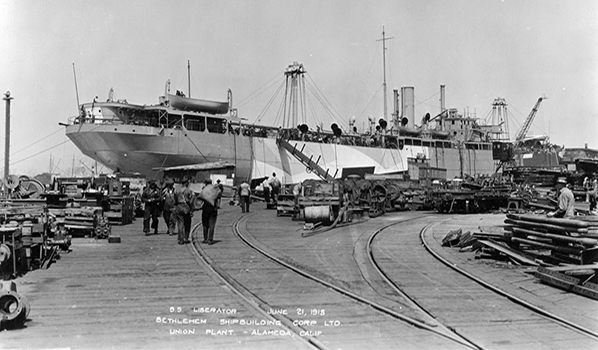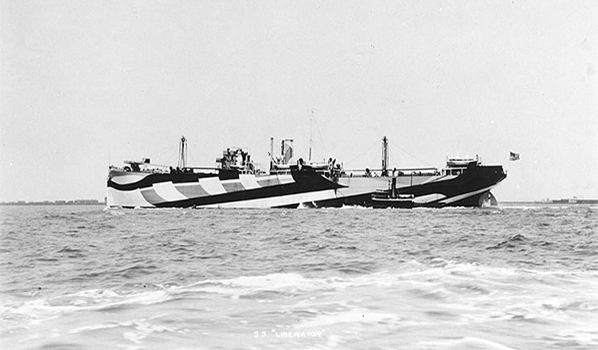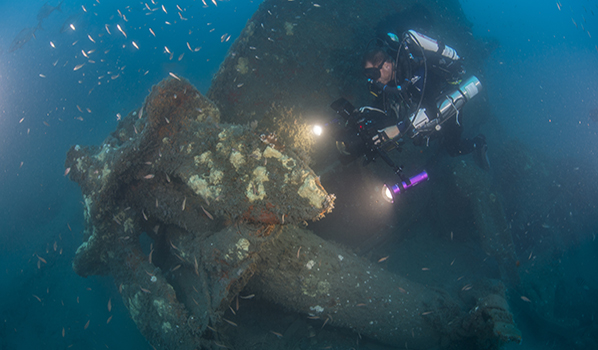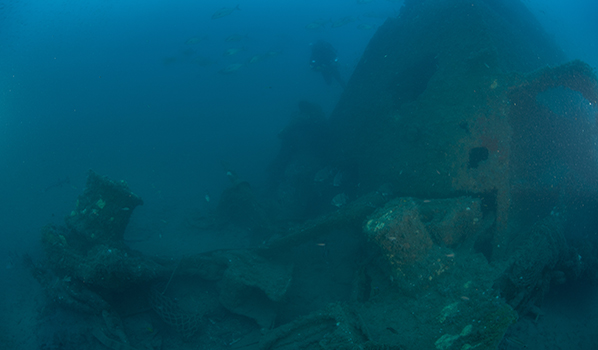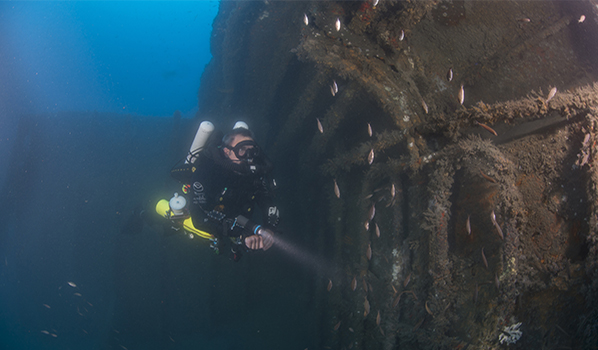Liberator
Ship Stats
Location: 35°4'47.57"N, 75°23'28.07"W (35.07988, -75.39113)
Depth: 120 feet
Vessel Type: Freighter
Length: 410 feet Breadth: 56 feet
Gross Tonnage: 7,720 Cargo: 11,000 tons of sulfur
Built: 1918, Bethlehem-Fairfield Shipbuilding Corp., San Francisco, California, USA
Hull Number: 151 Port of Registry: Galveston, Texas, USA
Owner: Lykes Brothers Steamship Company, Tampa, Florida, USA
Lloyd's Register Details: Steel hull, web frames, longitudinal framing, two decks, triple expansion three cylinder steam engine, three boilers
Former Names: USS Liberator (U.S. Navy, 1918-1919)
Date Lost: March 19, 1942
Sunk By: U-332 Survivors: 31 of 36 (5 dead)
Data Collected on Site: Multibeam sonar; still and video photography
Significance: Casualty of World War II's Battle of the Atlantic
Wreck Site
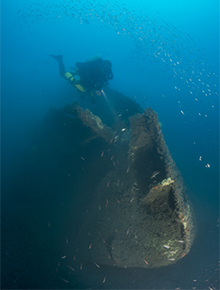
The wreck of Liberator is located on Diamond Shoals in approximately 120 feet of water. As built, the vessel was 410 feet long and 56 feet abeam. The orientation of the wreck is somewhat confusing. It is broken into a few pieces with the bow section facing aft.
Much of the site remains and there is a large degree of relief. The largest section is a portion of the hull, which lies on starboard side and rises 30 feet off the bottom. Likewise, the bow rests on its starboard side and is broken-up just aft of where the port anchor still sits in its hawse pipe.
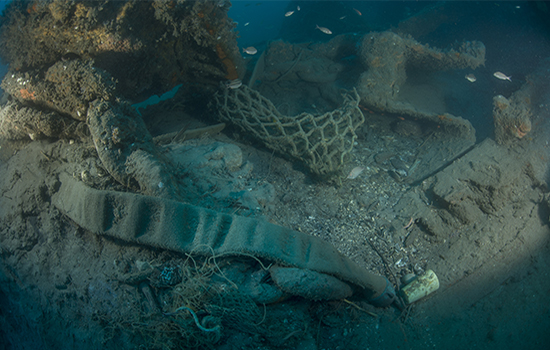
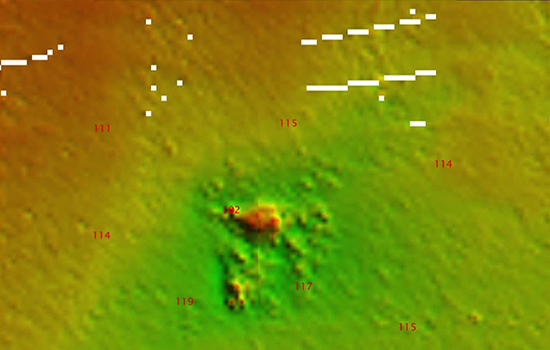
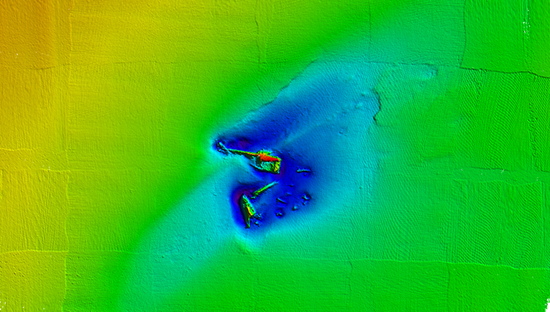
Historical Background
Built during World War I, Liberator was modified for war use and was designated USS Liberator. It operated as a troop transport vessel, carrying troops from St. Nazaire, France, back to the United States, making a total of five trips. In 1919, it was decommissioned and remained in surplus until 1933 when it was bought and returned to a cargo ship. Liberator operated commercially through the outbreak of World War II and was modified with deck guns for protection against U-boat attacks.

In mid-March, 1942, USS Dickerson (DD-157) was dispatched to the North Carolina coast to provide assistance for merchant vessels traveling in the area. During the night of March 18, Liberator passed Cape Lookout, North Carolina, and saw a large tanker burning. The Liberator's naval gun crew immediately went to full alert. Liberator had also intercepted radio traffic saying that the U-boat responsible for the attack on the tanker might still be in the area. Therefore, the captain ordered the Liberator to accelerate to full speed out of the area.
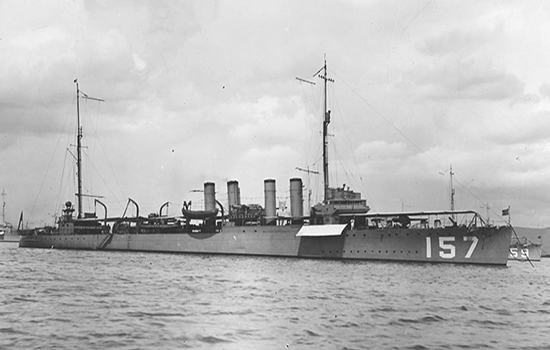
In the darkness of night and miles away, USS Dickerson's radar crew picked up a fast-moving surface contact near the burning tanker and thought it was a fleeing U-boat. Running blacked-out and steaming nearly at full speed, USS Dickerson approached the fleeing ship, and it turned out to be the Liberator. However, Liberator's crew did not know that the Dickerson was in the area to assist with the damaged tanker, and the gun crew opened fire on the Dickerson killing several sailors. The Dickerson's captain was also injured, and as he lay dying on the bridge, he ordered the ship to make full speed away and back to Norfolk, Virginia. Unfortunately, the captain died shortly before making port the next day. Unbeknownst to Liberator, they had just driven away their best hope for protection.
Meanwhile, the commotion of all the vessels on the surface attracted the attention of U-332. The next morning, as Liberator was speeding away from the area and thinking that they had battled a U-boat, U-332 lined up for the attack. It fired two torpedoes that struck the freighter setting the cargo on fire and killing five crewmembers in the explosion. The ship sank in less than 30 minutes. Shortly after the sinking, thirty-one crewmembers were rescued by Navy tugboat, USS Umpqua (ATO-25) and taken to Morehead City, North Carolina.


